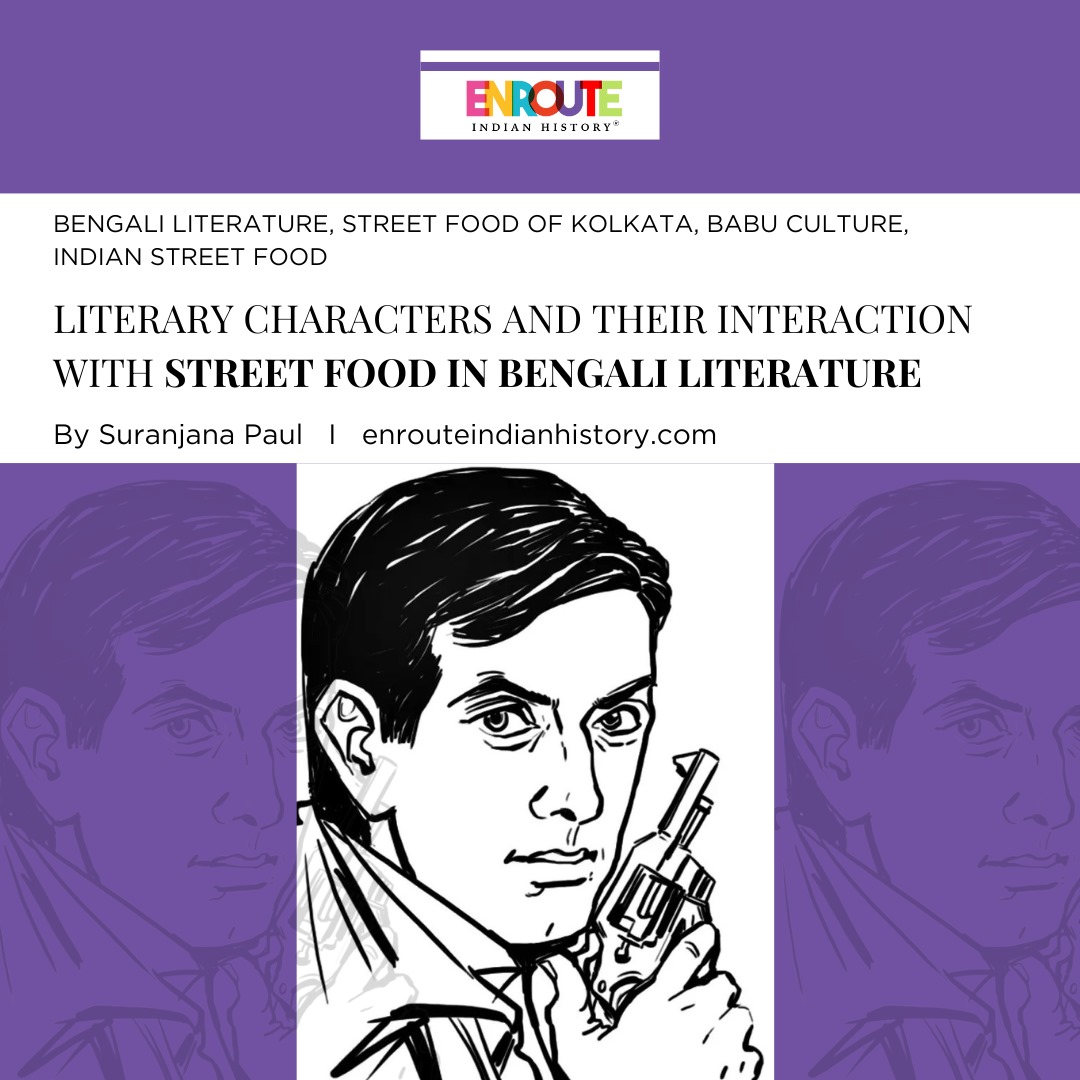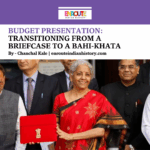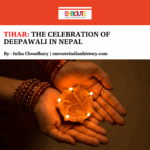Literary characters and their interaction with Street Food in Bengali Literature
- EIH User
- May 8, 2024

Food is an integral part of Bengali culture and it is made with different kinds of food items but Bengali cuisine is incomplete without deep-fried items, like luchi, bhaja-buji, beguni and all of which are very common in Bengali households. They are not only cooked in the Bengali household as a regular meal rather these fried items are more popular as an evening snack, and also these are the most quintessential street food of Bengal, a part of “Bangaliyana”. Bengali culture also gives importance to the pet of Bengali men and their love for food and because of their love for food , they have suffered from different diseases which are related to their pet and to help their digestion system, they make a companionship with antacids for their lifetime. Readers can relate the whole scenario with a little bit of Bhashkor Banerjee, the centre character who had chronic constipation with hypochondria from the film Piku, directed by Shoojit Sircar, especially the chronic constipation problem. Though in recent years, people of different ages are more aware of their health, that does not mean the importance of the street food has been eliminated from their lives, rather it’s getting rejuvenated everyday in a new way.
Times of snacking
After all those pet related problems, street foods have a deep relation with Bengali culture. Snacking in the Bengali culture is not restricted to the evening time. They start their days with kochuri and jilipi and their snacking goes on. You can see the crowd in front of the kochuri stores on Sundays and holidays and this is a usual routine for middle-class Bengalis. Even in the last part of the film Piku, the director shows us that Bhashkor has cycled around the city and brought kochuri for his entire family for breakfast.
Bengali people have created a strict division according to the time of the day. Most of the Bengalis love to eat telebhaja in the evening time accompanied by muri or jalmuri and adda. In the northern part of Kolkata, royaker adda with telebhaja, jhalmuri were the popular practices for Bengali men which are also reflected in Bengali Literature which will be discussed in the coming paragraphs.
Ekal- Sekal of Street Foods
Nowadays, with the help of the YouTubers and bloggers street food vendors are getting popular which helps them to increase their sales but the situation was not in favour of them in the colonial period. The street food vendors had suffered due to the colonial laws which were based on health and hygiene and also the poor vendors were unable to pay for the hawking licence which was compulsory at that time, so the whole situation made the street food vendors invisible but, they still existed to the school goers who had found them from dark corners. The street food vendors did not maintain hygiene during the preparing time of any food item or during selling time which needs to be mentioned to portray a clear picture of the old days.
Types of street-foods in Bengal
Street food of Bengal is not restricted to a particular category, fuchka to churmur, jhalmuri to bhelpuri to chop, and even chinebadam (peanut), kulfi (ice cream which is made with milk) are also part of the Calcutta street foods.
Calcutta had enjoyed the capital status until the British rulers had shifted their capital into Delhi and due to the status different people from different communities had come to Calcutta to earn money. These people’s cultures were not restricted to their communities, their cultures were also reflected in the street food of Bengal. Chowmine, the popular street food of Kolkata came from the Chinese community who lived in Calcutta as well as the famous Roll which is rolled up with kebab in fried paratha that came from Muslim communities.
Roll is the famous street food of Kolkata

(Source: Outlook TRAVELLER)
Street food and Bengali literature:
There are so many references to food in Bengali literature from different eras. Different kinds of foods have been discussed in this, especially in the Mongol Kavyas but there is no evidence of street food. The first reference from Bengali literature is from Sachitra Guljernagar (1871) where telebhaja and roasted gram are referred to as street food along with the chilli-chutney (Mukhopadhyay, B., 2004). The journey of street food in Bengali literature has started from kedarnath Dutta Bhaanr’s Sachitra Guljernagar and it’s going on.

(Source: exotic india, Figure 1: Front cover of the translated book of Sachitra Guljarnagar.

Figure 2: The title page of the translated book of Sachitra Guljarnagar.)
Interaction with Literary characters:
Bengali literature is full of food-loving characters from different genres and the characters belonging to different ages and also the characters are written in different time periods. In popular Bengali literature like Teni da, Feluda, Ghonada, Mitin Mashi, and Eken babu there is at least one character who loves to eat food including street foods.
Tenida, the one of the famous characters in Bengali Literature which is written by Narayan Gangopadhyay, this character is written for children but it is popular with people of different age groups. The concept of Royaker adda is already mentioned in the first part of the article which is also portrayed in the story of Tenida. Tenida, Habul Sen, Kyabla and Pyalaram used to sit on the Chatturjee’s Royak with food at Pataldanga. In one story Pyalaram mentioned that there, they also enjoyed telebhaja with their imaginary stories of their qualities. Tenida’s love for the alu kabuli is expressed by snatching it from his friend Kyable, even though he does not stop after snatching the alu kabuli which was great in taste according to him, so he orders Kyabla to bring more alu kabuli for him. Tenida loves to eat on other people’s money and most of the time those foods were street food. Even he hates to share his telebhaja-beguni with others.
Most importantly, the writer of Tenida expressed Tenida’s expression by using street foods, like fulkopi-r singara, aat anar singara, and beguni.
In the stories and the novels of Tenida, there are plenty of examples where the writer shows us the love for the street food of the whole group but four of them, Pyalaram, cannot enjoy the street food due to his physical condition which is also related to his pet.
Most of the popular literature represents the middle class and the elites of urban Bengal. Bengali babu culture is not divided by vegetarian and non-vegetarian foods but the practices segregate the class. In Kolkata, different types of chop-ghugni-churmur-alu kabuli are not overpriced so that the middle class or the lower middle-class people can not touch the food but the practice with relaxation and street food is not very common among the lower class people. In the concluding discussion tenida, will be focused on explaining the class representation in popular Bengali literature. In so many stories, the author has mentioned the food crisis during the war but this war does not affect any characters or their food habits, even their acts and the events indicate their class which is not less than a babu. In the story of Tenida, the author mentions the ingredients of polao which are expensive even in today’s time. Along with the ingredients, Pyalaram who is the narrator of all stories, also brings up the word juddher bazar to describe the period of the story and the word, ‘juddher bazar’ is used to understand the war is going on. The whole incident of the story occurs during the war still Tenida or any other characters face difficulties in living their upper-class lifestyle.
Food-loving Bengalis most of the time behave as the mouthpiece of the babus and their culture. Calcutta not only consists of Zamindars or intellectual babus but there are also mute-mojoor and other working-class people whose love for the food along with their style of relaxation is somehow missing in this popular Bengali literature. Apart from this criticism, popular Bengali characters accurately interact with street food through the ages.
In the present time, due to the health consciousness of the people, they are rejecting deep-fried street foods and coming up with new healthy alternatives to fried and other street foods.
REFERENCES
Mukhopadhyay, Bhaskar. “Between elite hysteria and subaltern carnivalesque: The politics of street-food in the city of Calcutta.” South Asia Research 24.1 (2004): 37-50. Available from: DOI: 10.1177/0262728004042762. [Accessed: 4 May 2024]
Gangopadhya, Narayan. “Tenida Samagro”. Ananda Publishers’ 11th ed. (2004).
Banerjee, Sumanta. “THE PARLOUR AND THE STREETS Elite and Popular Culture in Nineteenth Century Calcutta”. Seagull Book. Calcutta.(2019)



















